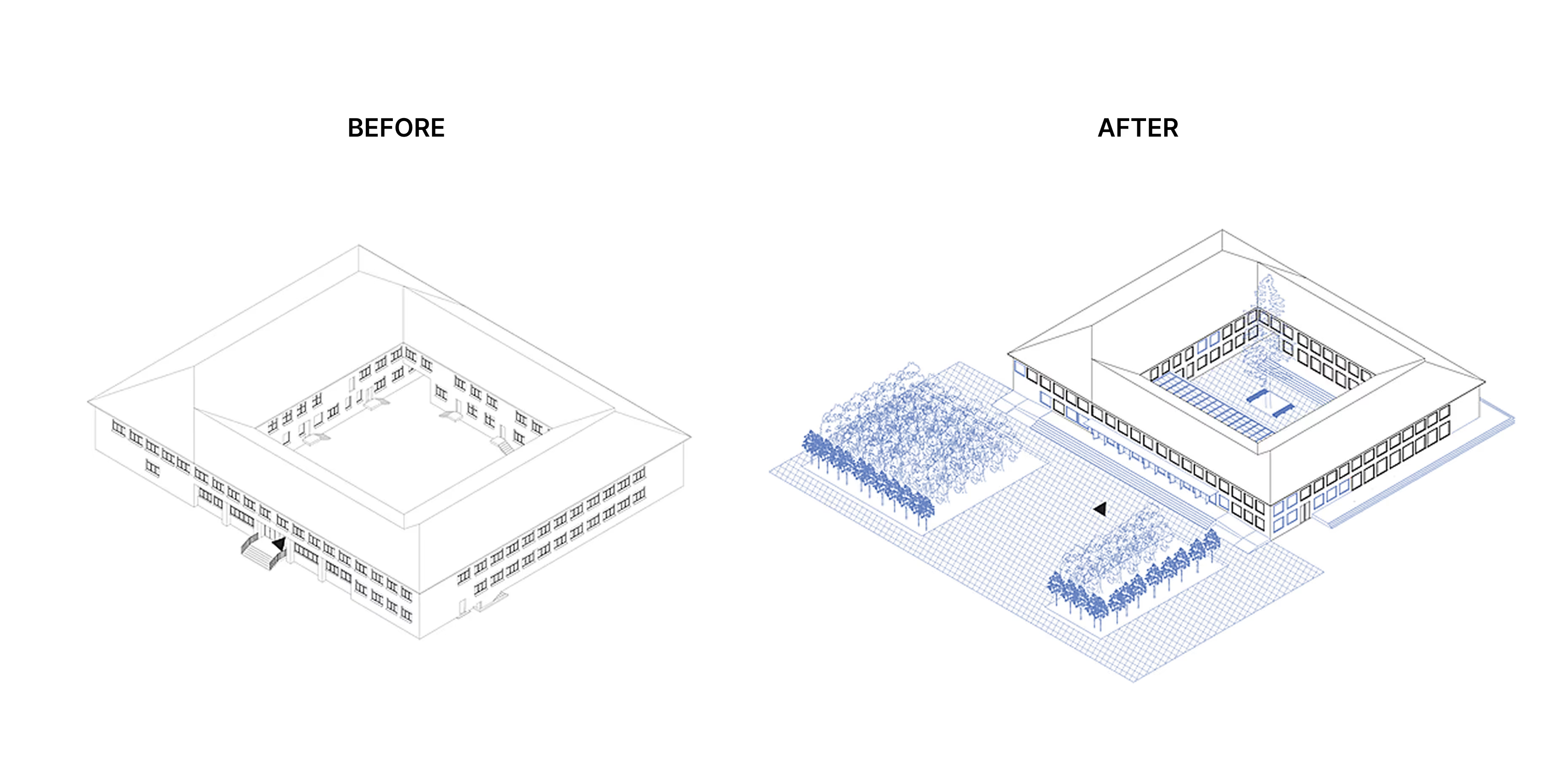
On the initiative of Mykhailo Fedorov, Vice Prime Minister for Innovation, Education, Science and Technology Development and Minister of Digital Transformation, the team of the Ministry of Education and Science has launched fundamental transformations in the education sector, from kindergartens to higher education institutions.
To launch systemic changes in the secondary school infrastructure, the Big City Lab team partnered with the Rebuild the Wonderful NGO, which includes Do Architects (Lithuania), Kavakava (Estonia), and Archikon (Hungary), architectural bureaus that have developed architectural solutions for transforming typical schools in their countries. Ukrainian architects from Oksa, Pecker and Partners, and Kumeiko Architects architectural bureaus created the designs to meet Ukrainian state building codes.
The project was funded by the Mariupol Reborn NGO, DTEK and Metinvest.
While working on the Mariupol 2040 vision, we discovered that 72% of all schools in the city are 5 architectural building types. A similar situation can be observed in other cities. If we look at the schools destroyed by the war, we see that one-third of them are the same five building types across Ukraine. Thus, five projects are enough for the government to rebuild or reconstruct thousands of schools to a high standard.
That is why we have developed 5 transformation concepts that answer what build back better means.
A type O school is a rounded building with two open passageways on the ground floor that lead to the courtyard. The school has two floors and a basement. This dictates an obvious courtyard atmosphere. The inner courtyard is private, and the outer courtyards are semi-public.
The pilot school type O is located in the Kyiv region. The main goal of the transformation is to create a public square in front of the school entrance, which will become a centre of attraction for all local residents. The square is fully visible from many angles, creating a safe environment for the school community.
Complete design and estimate documentation have been developed. The construction of this type of school is planned to begin in 2025.

The proposal includes seating areas, transparent entrances and wheelchair-accessible ramps.
The new extension, made of glass and steel, houses an event hall. This combines the library and event hall to create a larger, more interconnected meeting space. The redesign of the courtyard improves the sense of community and internal connections. New private terraces for primary school students only allow them to study and play outdoors.


The courtyard becomes a place that inspires the outdoors. It is surrounded by transparent walls that allow you to see what is happening outside, while creating an atmosphere of security and connection between spaces.
The entrance area becomes a lively and dynamic place where students, their parents, and residents can communicate, spend time, and organise meetings and events. The school is no longer isolated, it becomes a community centre.
A corridor is more than a transit zone. Window sills are transformed into tables and amphitheatres where students can relax, socialise, study and watch what is happening in the classrooms through glass doors.
The event hall extension creates a versatile space where everyone comes together for events or just for fun. It easily connects with the courtyard to create one large area.


The most significant change is the expansion of the public areas. The new areas are also more transparent, making social interactions more regular and enjoyable.
Major transformations:
The entrance to the school has a new staircase, where seating areas and ramps for people with disabilities are integrated into a single structure.
A large library greets you at the entrance to the building. Every day, students, teachers, and parents meet here and strengthen their bonds with each other.
The library is in full swing in the morning and evening. During the day, it is a quiet and peaceful place where students can read, do homework, or just relax.
The new extension houses an event hall. It creates a space for the school community to gather for special events or occasions. On weekdays, it becomes an indoor assembly area and an extension of the courtyard.
The corridors along the courtyard's perimeter increase the connection between the school's indoor and outdoor spaces. They become a multifunctional space where students can play, do homework and communicate with each other. The corridors also have lockers for students' personal belongings.
A private corridor separates the primary school from the middle and high schools. The semi-enclosed space promotes communication within the community, allowing students to develop interactions with each other freely.
The teacher's office is located on the ground floor. The space allows teachers to interact with each other, work on various tasks and relax during breaks.
A lift is located next to the main entrance to the school, providing access to all floors for people with disabilities.
{{slider-35="/sliders"}}